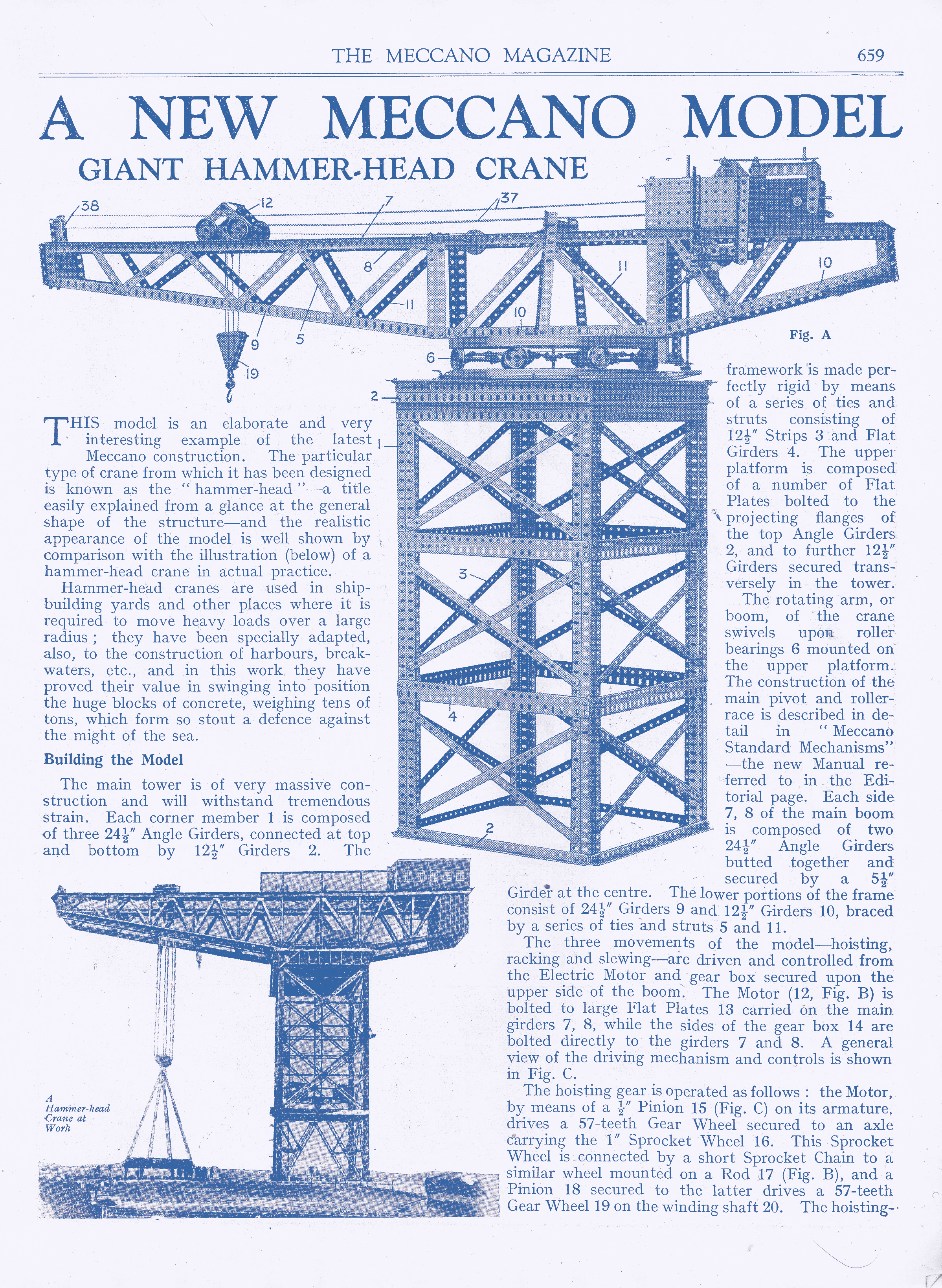
Constructing Meccanoland:
Engineering a Boy's World,
1901-1925.
Final Dissertation
Royal College of art / V&A History of Design MA
Final Dissertation
Royal College of art / V&A History of Design MA
The choice of a subject to study is part personal interest and part practicality, part intent and part serendipity. The selection of a topic for my dissertation was a combination of these, triggered by personal interest, arrived at via research for an essay on Meccano's Dinky Toy cars which led me to discover the little discussed Meccano Magazine. Other possible avenues emerged from this earlier work and could potentially have provided suitable subjects, or at least starting points, for a thesis: the adaptation and re-design of factories for war production, for example, or further exploration of the British Industries Fair might have proved fruitful but Meccano Magazine was the 'object' which most piqued my curiosity.
While I was familiar with the toy construction set, Meccano, I had been unaware of the existence of Meccano Magazine, and the reading of several issues provoked numerous questions (a happy circumstance considering thirty-thousand words would have to materialise from its analysis)! Why did a magazine produced by a toy manufacturer feature articles on engineering and applied science and contain advertising for competitor toy companies? Who was the intended audience for its varied content? How did Meccano become such a gendered toy?
My work interrogates the role that Meccano Magazine played in the promotion of Meccano; giving meaning to, and creating a world around, the components that constitute the Meccano system. I examine how the magazine acted as an instrument of communication and negotiation between Meccano and its consumers. This publication, which arguably had a significant bearing on the identity creation of a product and its users, had received little critical attention and my contribution seeks to remedy this situation. Meccano Magazine presented itself as an intriguing subject for study, emerged in the process as a unique publication within the wider periodical market of the early twentieth century and offered up more material for study than initially anticipated which made it an ideal subject, one worthy of further attention in the future.
